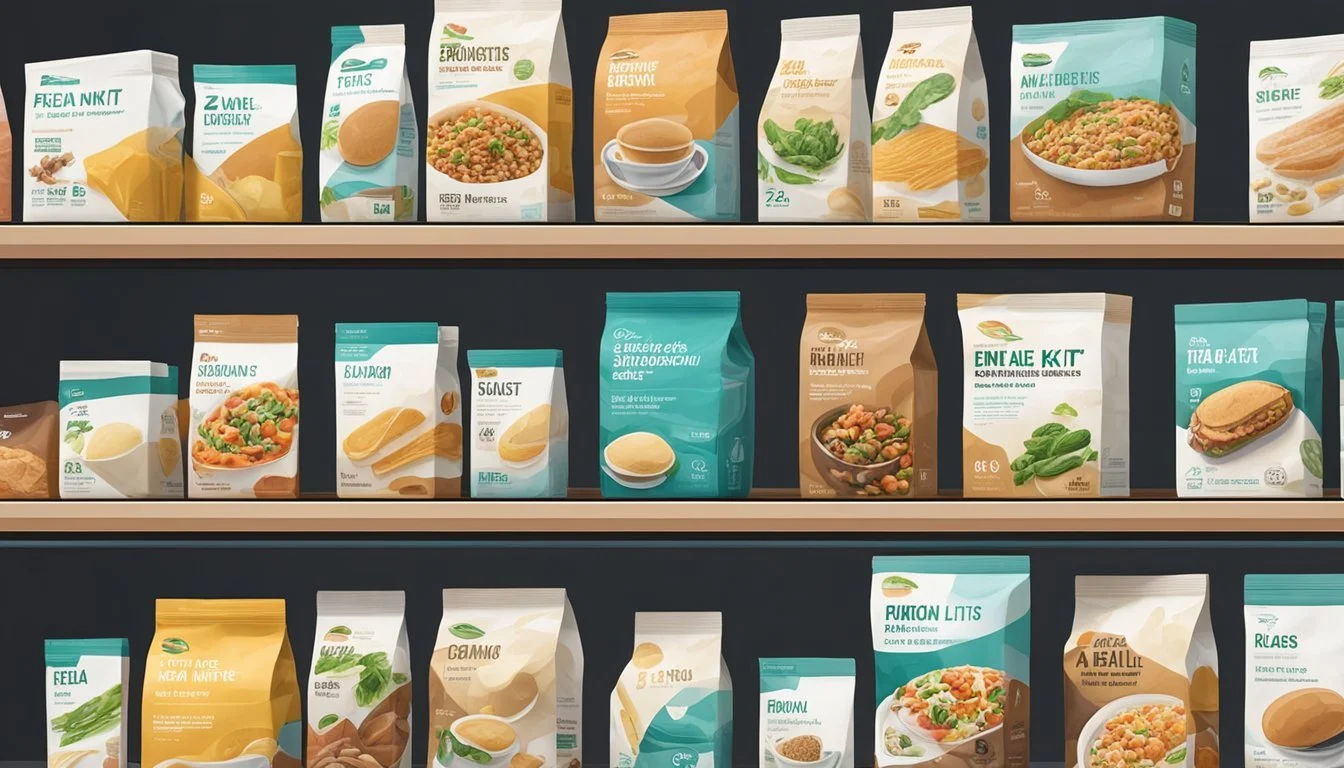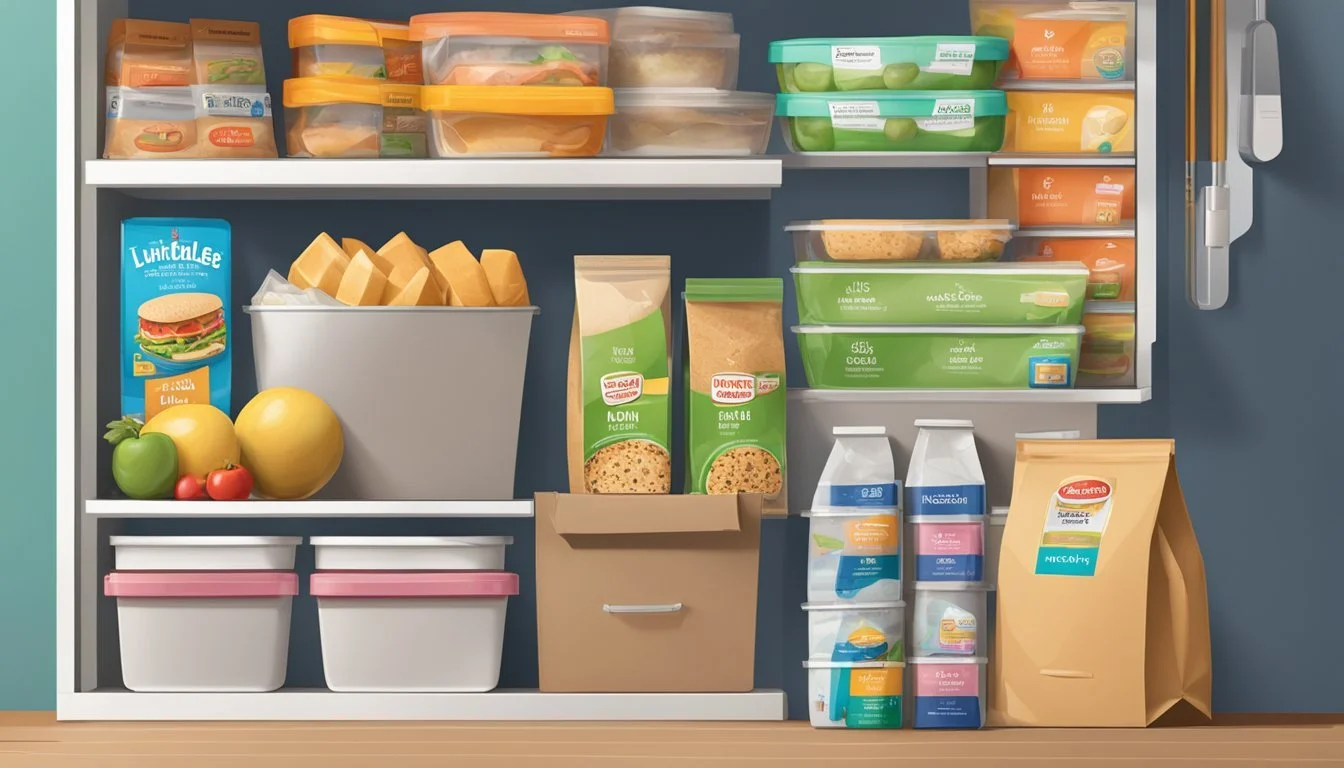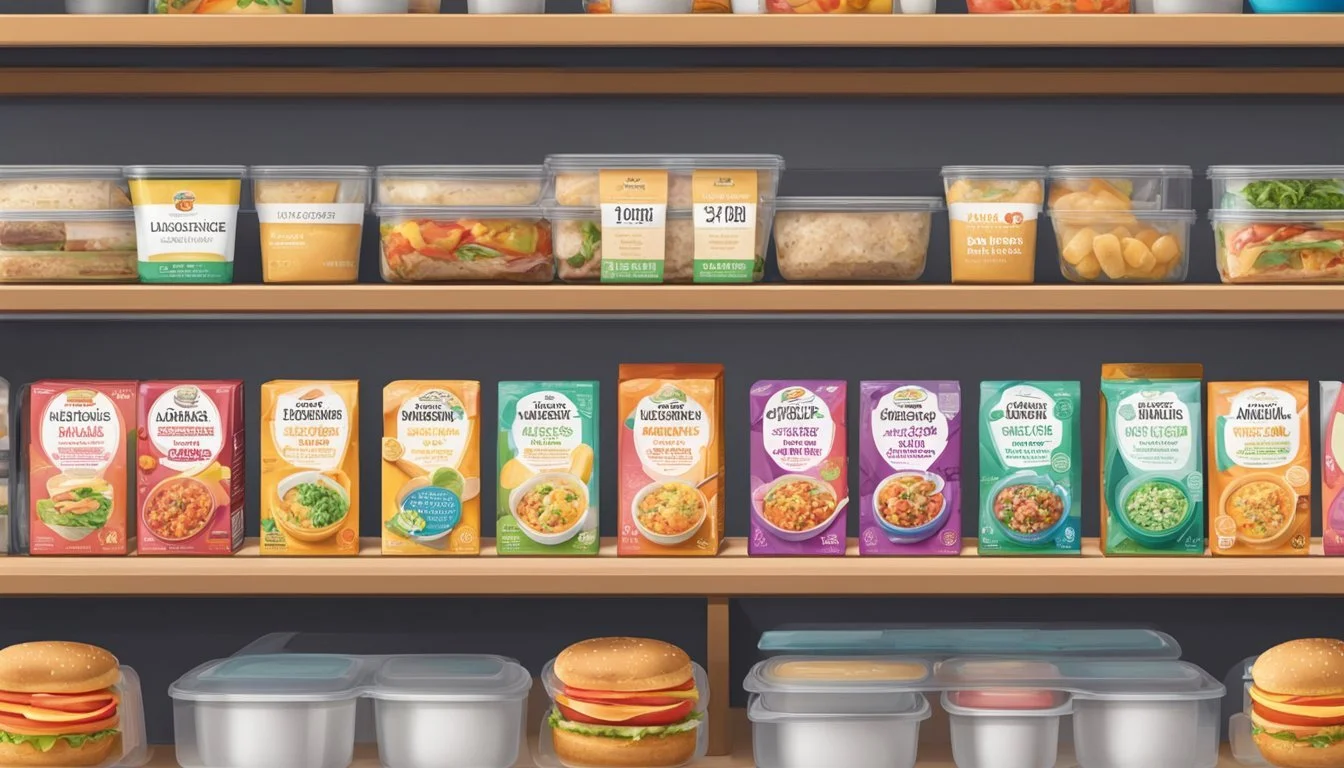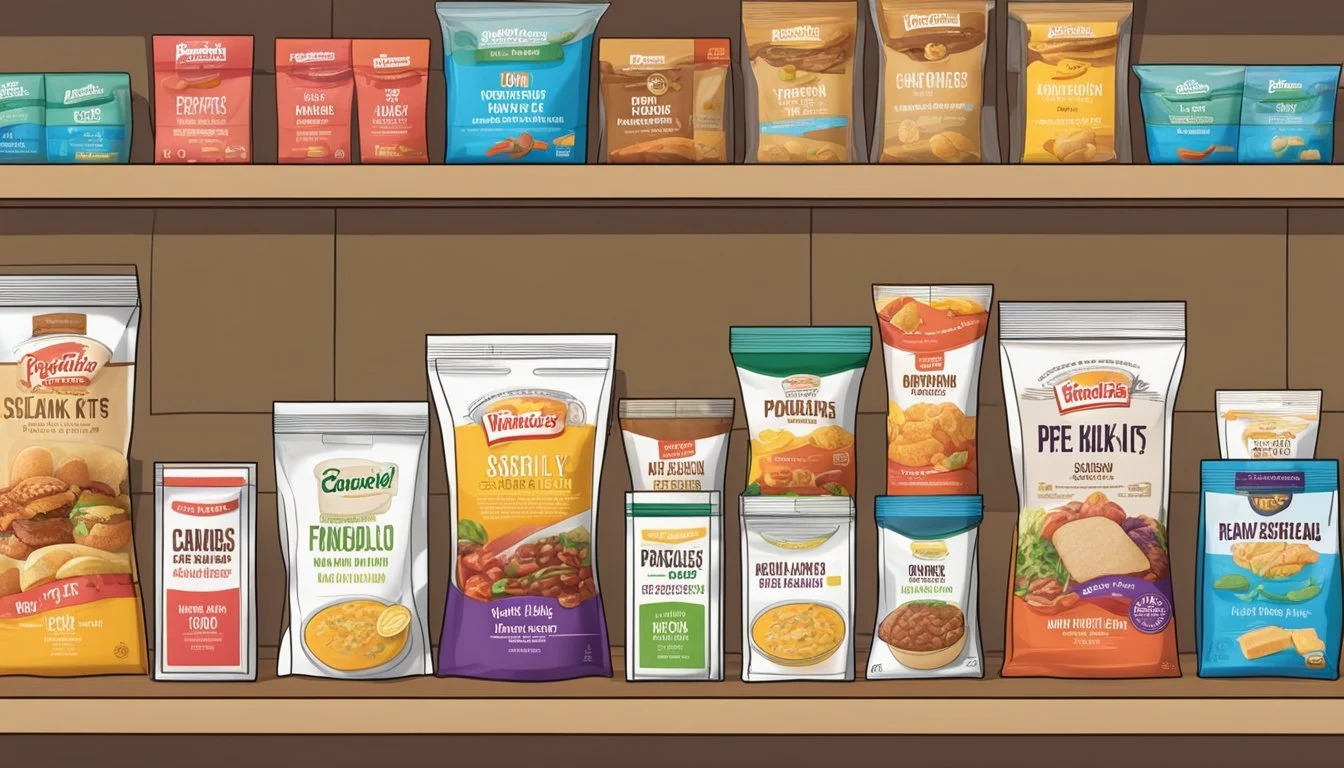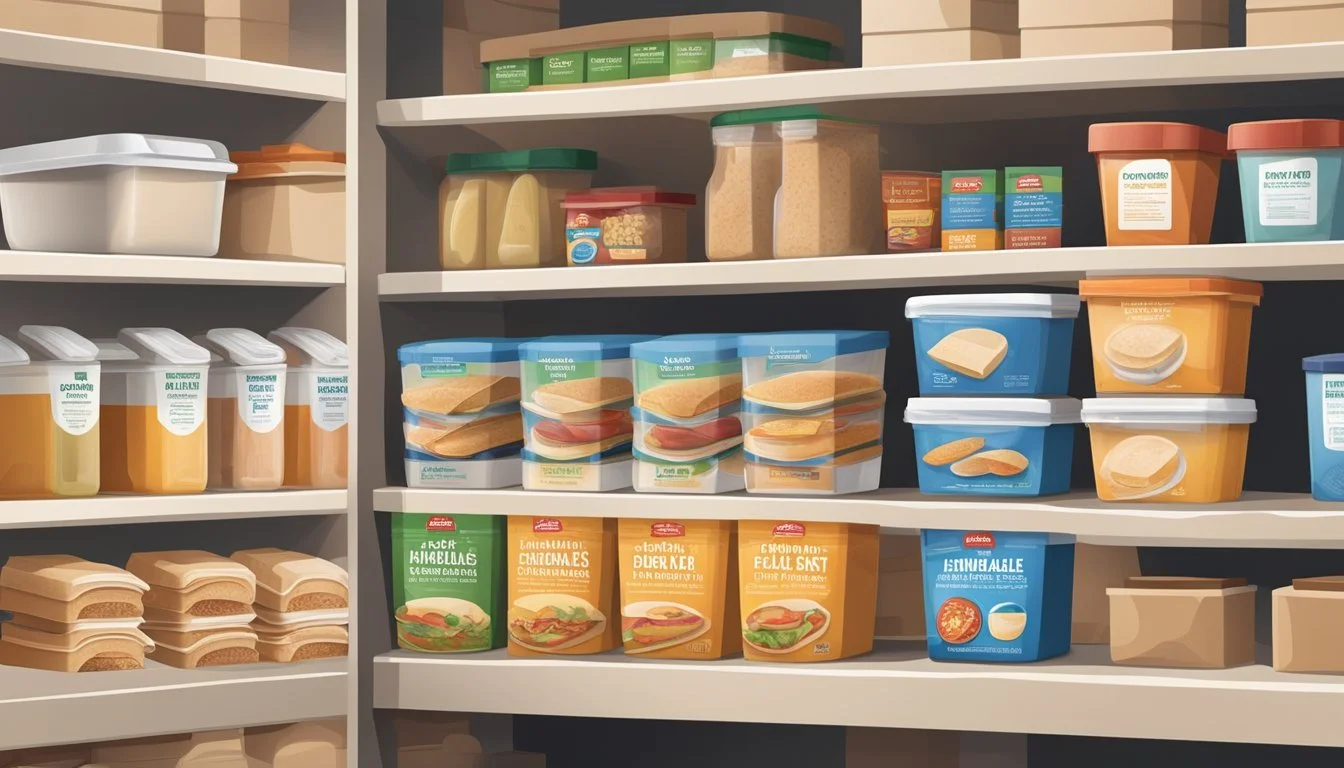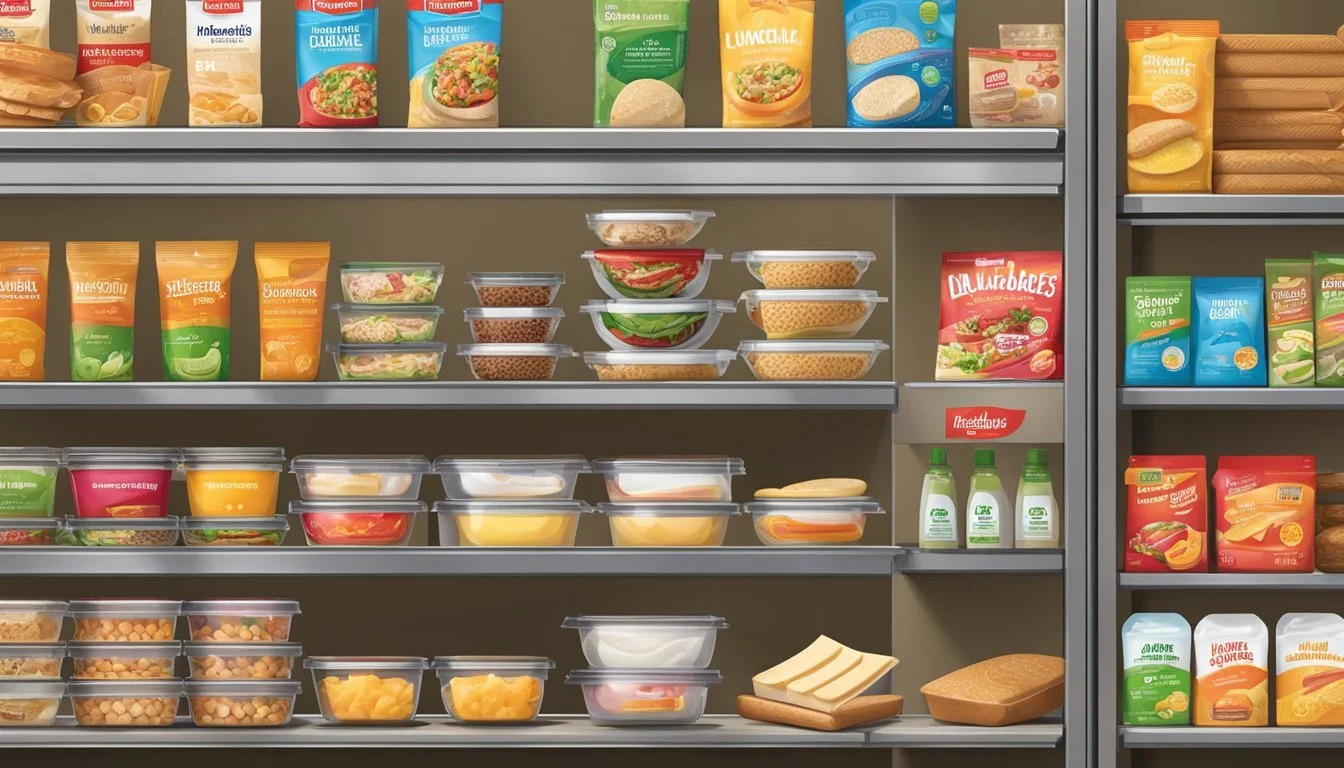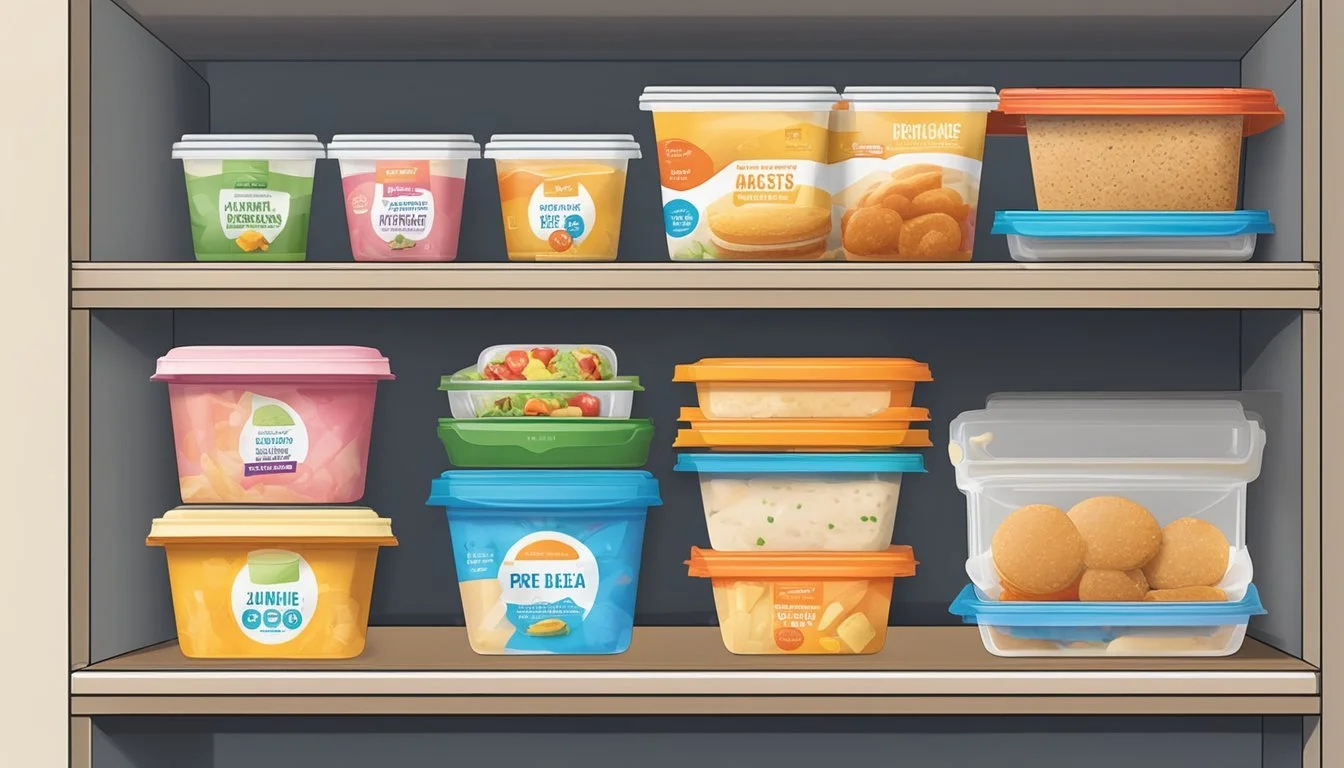How Long Do Lunchables Last?
Shelf Life of Pre-Packaged Meal Kits
Pre-packaged meal kits such as Lunchables, offered by Kraft Heinz, have revolutionized convenience for quick lunch (What wine goes well with lunch?) options. Each Lunchable is marked with a "best by" or "use by" date, indicating the peak period of freshness and quality. This date is important for consumers to note, as it aids in ensuring the product is enjoyed while it's fresh and taste is optimal. Storage and handling play a crucial role in maintaining the integrity of these meal kits.
Refrigeration is key to preserving the safety and longevity of pre-packaged meals. Those like Lunchables, containing dairy, meats, and other perishables, require consistent cold temperatures to prevent the proliferation of harmful bacteria. Without proper refrigeration, these meal kits can rapidly lose their freshness, compromising both taste and food safety. Consumers are encouraged to prioritize proper storage to make the most of these convenient meal solutions.
Understanding the shelf life of pre-packaged meal kits involves considering their ingredients and packaging methods. Manufacturers employ various techniques to extend the life of these products, but once opened, the remaining contents should be consumed within a short time frame or stored according to the package recommendations. Adhering to food safety standards when storing and consuming meal kits such as Lunchables is essential for one's health and enjoyment of these products.
Understanding Product Shelf Life
A product's shelf life is influenced by various factors, including the expiration date and storage methods. The following sections delve deeper into how these aspects affect the longevity of pre-packaged meal kits like Lunchables.
Expiration Date Significance
The expiration date on pre-packaged meal kits serves as a guide for consumers to determine the anticipated period during which the product should remain fresh. The "best by" and "use by" dates are often misunderstood. It's important to note that "best by" represents the manufacturer's estimate of when the product will be at its peak quality, while "use by" is a stronger indication of the last date the product should be consumed, often associated with safety concerns. These dates are based on the assumption that the product has been stored properly.
Refrigerator Impact on Lifespan
The refrigerator plays a critical role in extending the shelf life of products like Lunchables. When stored at the correct temperature, typically between 34°F and 40°F, unopened Lunchables can last:
2 to 3 weeks if they are the kind stored in the fridge.
Up to 2 months for certain types of Lunchables.
However, the actual lifespan can vary based on the specific ingredients in the meal kit. For example, meal kits that include meat are more prone to spoilage and might have a shorter fridge life, especially if the refrigerator's temperature fluctuates. Freezing unopened meal kits can extend their shelf life further, allowing them to last for 2 to 3 months. It's important for consumers to store Lunchables in the refrigerator promptly after purchase to maintain their quality and safety.
Storage Guidelines and Temperature Control
In the realm of pre-packaged meal kits like Lunchables, efficacy in storage is paramount. It ensures the longevity and safety of the product, with temperature control being the critical factor.
Refrigerated vs. Room Temperature
Refrigerated Storage:
Temperature range: Ideally, pre-packaged meal kits should be stored in the refrigerator at temperatures between 34°F - 40°F (1°C - 4°C).
Shelf life: Under refrigeration, Lunchables can maintain their quality for a period leading up to their expiry date as indicated on the packaging.
Room Temperature Storage:
Duration: Pre-packaged meal kits can last 7 to 10 days unrefrigerated; however, this is not ideal for preserving the quality and safety of most Lunchables.
Conditions: If kept at room temperature, the area must be cool, away from direct sunlight and not prone to humidity or temperature fluctuations.
Importance of Temperature Maintenance
Food Safety: Maintaining the recommended refrigeration temperature is crucial to inhibit the growth of harmful bacteria that could lead to foodborne illnesses.
Flavor and Freshness: A stable temperature prevents deterioration of taste and texture that temperature variations can cause.
Humidity Control: A refrigerated environment also controls humidity levels, which further protects the product's integrity.
By adhering to these storage guidelines and understanding the significance of temperature control, consumers can safely enjoy their pre-packaged meal kits while retaining quality and taste.
Factors Affecting Food Quality and Safety
Food quality and safety in pre-packaged meal kits such as Lunchables are influenced by multiple factors that can lead to spoilage and the potential for foodborne illness. Proper identification of spoilage signs and measures to prevent bacterial growth are essential to ensuring these food products are safe for consumption.
Identifying Spoilage Signs
Consumers can identify spoilage in pre-packaged meals through specific indicators. Discoloration may signal chemical changes or bacterial activity. A change in smell can indicate spoilage, with off-odors being a clear sign that the food should not be consumed. Texture changes such as a slimy surface on meats or cheeses also suggest microbial growth, and any of these signs require immediate disposal of the product to prevent the risk of foodborne illness.
Preventing Bacterial Growth
To inhibit bacteria proliferation in pre-packaged meal kits:
Temperature: Maintain a consistent temperature below 40°F (4°C), as bacteria can multiply rapidly at higher temperatures.
Sealed Packaging: Ensure the integrity of the packaging, as any unsealed areas can expose the food to contaminants.
Consume by Date: Adhere to the "use by" dates, as these are indicators of when the product may no longer be safe to eat.
By observing these guidelines, the shelf life of pre-packaged meals can be maximized, and the risk of spoilage and food-related diseases can be minimized.
Nutritional and Health Considerations
When evaluating pre-packaged meal kits like Lunchables, one must consider both their convenience and nutritional makeup. The ingredients and preservatives used in these products significantly affect their nutritional value and shelf life.
Ingredients and Nutritional Value
Pre-packaged meal kits are composed of a variety of ingredients that can include processed meats, cheeses, crackers, and sometimes fruits or desserts. Their nutritional value mainly comes from the macronutrients provided: carbohydrates from crackers, protein from meats, and fats from cheeses. Many of these meals are not designed with complete nutrition in mind and often lack sufficient fruits and vegetables which are important sources of vitamins, minerals, and fiber.
Protein Content: Can vary, but processed meats are a common source.
Fat: Often present in cheese and meat; the type of fat depends on the specific ingredients used.
The specific nutritional content should be checked on the product's labeling for a more accurate breakdown.
Preservatives and Sodium Content
To extend shelf life and maintain product safety, pre-packaged meal kits frequently contain preservatives. These chemicals inhibit the growth of bacteria and molds, which is why products like Lunchables have an extended refrigerated lifespan.
Sodium Content: Pre-packaged meals typically have high levels of sodium due to its preservative qualities and flavor enhancement.
High levels of sodium and preservatives may not align with a healthy diet, especially for individuals with certain health concerns such as hypertension. Consumers are advised to scrutinize product labels for specific preservative types and sodium levels to make informed choices.
Packaging and Its Role in Preservation
Packaging is a critical factor in preserving the freshness and extending the shelf life of pre-packaged meal kits such as Lunchables. It serves to protect the food from external contaminants while the material and design ensure optimal conditions to maintain quality.
Protecting Meals from Contamination
Pre-packaged meal kits are sealed to prevent exposure to bacteria, viruses, and other contaminants that can cause food to spoil prematurely. By creating a barrier between the food and the environment, packaging plays a vital role in maintaining the hygiene and safety of the food items. Packaging technologies such as modified atmosphere packaging can significantly lower the risk of contamination and preserve the meal's integrity far longer than if it was left unprotected.
Packaging Material and Design Influence
The role of packaging material and design is not just limited to aesthetics; it directly influences the longevity of the contents within. Appropriate materials such as plastics or foil can block light and oxygen—the main contributors to degradation, thus preserving the quality and edibility of meals. Intelligent design such as easy-open seals, and resealable packets add to the convenience while ensuring that the protection against contamination is not compromised after the initial opening.
Materials Used:
Plastics: Airtight, lightweight
Foil: Light-blocking properties
Design Features:
Resealable packs: Maintain freshness after opening
Modified Atmosphere Packaging: Extends shelf life
Through the use of advanced materials and design innovation, food packaging effectively preserves the meal quality until the intended time of consumption.
Specific Meal Kit Types
Pre-packaged meal kits like Lunchables offer various food options catering to taste and convenience. Their shelf life varies depending on ingredients such as meats, cheeses, and dairy, which are integral to ensuring product safety and quality.
Understanding Pizza Lunchables
Pizza Lunchables generally include bread crusts, sauce, cheese, and occasionally a meat topping. Shelf Life: Typically, they last up to 2 months when kept refrigerated. The cheese and sauce should be consumed before the "Use By" date for optimal freshness.
The Lifespan of Meat-Based Options
Meat-based meal kits, including those with turkey, chicken, or hot dogs, have a shorter lifespan due to their perceptibility to spoilage. Freshness Indicator:
Cheese and Dairy in Meal Kits
Meal kits containing cheese and dairy require careful attention as these ingredients are sensitive to temperature changes. Dairy Products List:
Hard Cheeses: Can last up to 4-6 weeks.
Soft Cheeses: Best consumed within 1-2 weeks.
For safety, consumers should always refer to storage instructions and expiration dates provided by manufacturers and ensure items are stored properly in accordance with those guidelines.
Safe Consumption and Handling Practices
Proper handling of pre-packaged meal kits like Lunchables is crucial for safe consumption. The key to ensuring food safety is to follow specific storage guidelines and prepare meals according to manufacturer instructions.
Preparation and Serving Recommendations
When preparing and serving pre-packaged meal kits like Lunchables, it is important to adhere to the manufacturer's instructions on the packaging. Lunchables should be consumed by the "use by" date for optimal freshness and quality. For other meal kits that require additional preparation, one should:
Clean: Wash hands thoroughly before handling the food.
Separate: Use different cutting boards and utensils for raw ingredients to avoid cross-contamination.
Cook: Follow the cooking instructions to reach the appropriate internal temperature for cooked components.
Chill: Refrigerate promptly after serving if the meal will not be consumed immediately.
Meal kits shipped to homes need to remain within a safe temperature range during transit. Upon arrival, they should be stored in the refrigerator or freezer if they contain perishable items to prevent the growth of harmful bacteria.
Leftovers: Storage and Usage
Proper storage of leftovers from meal kits is essential to maintain food safety. For all types of leftovers, including those from Lunchables:
Storage Guidelines Description Refrigeration Leftovers should be refrigerated within two hours of serving. If temperatures exceed 90°F, refrigerate within one hour. Containers Store leftovers in airtight containers to prevent contamination and maintain freshness. Consumption Eat refrigerated leftovers within 3-4 days for best quality and safety.
If there is any doubt about the safety of the stored food, it is advisable to err on the side of caution and discard the leftovers. When reheating, ensure that the food reaches an internal temperature of 165°F to eliminate potential bacteria.
Understanding Consumer Choices
Consumer choices regarding pre-packaged meal kits like Lunchables are influenced by factors that include convenience, food choice variety, marketing agility, and dominant market position. Parents, pressed for time, gravitate towards options that promise a quick and hassle-free solution for children's meals, especially for school lunches or field trips.
Market Position of Kraft Heinz Lunchables
Kraft Heinz's Lunchables, widely recognized for their convenience and variety, have held a strong market position since their introduction in 1988. They dominate with an 84% market share in their category. These pre-packaged meal kits cater to busy parents and children alike, striking a chord with nostalgic appeal and marketing that resonates with both demographics. Lunchables are not just a food choice; they're a brand that has become synonymous with quick, on-the-go meals for kids. They've effectively marketed to working mothers and families seeking convenient food solutions.
Factors Influence on Consumer Choice Convenience High priority for busy lifestyles Variety Appeals to children's preferences Marketing Strong emotional and nostalgic pull Position Dominant, with few comparable alternatives
Alternatives to Pre-packaged Meals
However, the landscape for children's meal choices isn't monopolized by pre-packaged meal kits. Alternatives include homemade versions of Lunchables, which offer parents more control over nutritional content and can align with whole food preferences. Furthermore, whole food markets and organic options are becoming more prevalent, offering meal kits that focus on natural ingredients, less processing, and often tailored for specific dietary requirements. These alternatives challenge the convenience factor by emphasizing health benefits and homemade quality.
Homemade Lunchables: A customizable, cost-effective solution.
Whole Foods Market Options: Health-conscious meal kits.
The choice between convenient Lunchables and diverse alternatives highlights a broader food selection that caters to the varied preferences and priorities of both parents and children. The decision often hinges on balancing convenience with dietary considerations and personal values relating to health and food quality.
Product Variants and Add-Ons
Pre-packaged meal kits such as Lunchables offer a variety of product variants and may include additional items to cater to different preferences and nutritional needs. The shelf-life of these add-ons can differ significantly from the main components.
Cookies, Fruits, and Vegetables
Cookies, typically included as a dessert option in meal kits, are dry and shelf-stable. They usually remain fresh until the use-by date if the packaging remains unopened. However, once opened, cookies should be consumed within a week to maintain their crispness.
Fruits and vegetables included in meal kits are generally fresh or may be in the form of raisins or dried fruits. Fresh fruits and vegetables should be consumed rapidly, within a day or two, to ensure freshness and to prevent spoilage. Dried varieties last much longer, retaining quality up until the expiration date on the package.
Snack Pairings: Capri Sun and Cakes
Capri Sun, a popular drink often bundled with meal kits, has a long shelf-life due to its sealed packaging. It can be stored safely until the date stamped on the package. After opening, it should be consumed immediately or refrigerated and consumed within a day.
Cakes, such as those included as a treat in some meal kits, have a shorter shelf-life due to their moisture content which can lead to quicker spoilage. Typically, they should be eaten by the “best by” date for optimal taste and texture. Once the package is opened, the cakes should be consumed within 1-2 days.
Tips for Extending Shelf Life
Maintaining the quality and extending the shelf life of pre-packaged meal kits like Lunchables is crucial. Proper storage methods can significantly prolong the freshness and safety of these products.
Freezing and Its Effects on Quality
Freezing pre-packaged meal kits can extend their shelf life well beyond their refrigerated duration. However, it is important to note that the texture and taste of some components, like crackers, may change upon thawing. Here are some factors to consider:
Texture Changes: Items like cheese and deli meats may change in texture after freezing and thawing.
Time Frame: Meal kits remain safe indefinitely while frozen but are best consumed within 1-3 months for optimal quality.
Packaging Integrity: Ensure the meal kit is in an unopened, airtight package, to minimize freezer burn and maintain quality.
Use of Ice Packs during Transport
In situations where freezing is not practical, ice packs can be used to keep meal kits cool during transport. To effectively use ice packs:
Pre-chill: Place the meal kit and ice pack in the refrigerator before transport.
Insulation: Use an insulated bag to keep the temperature stable.
Placement: The ice pack should be placed on top of the meal kit, as cold air moves downward.
By employing these storage and transport techniques, one can ensure that pre-packaged meal kits retain their safety and quality for a longer period of time.
Understanding Regulatory Guidelines
When considering the longevity of pre-packaged meal kits such as Lunchables, regulatory guidelines set forth by the USDA play a crucial role in ensuring food safety and consumer protection.
USDA Regulations on Packaged Foods
The United States Department of Agriculture (USDA) lays out specific guidelines for packaged foods, especially items intended for long shelf life. These regulations encompass safe processing, preservation methods, and labeling requirements to protect consumers and ensure the food remains safe to eat over time.
Pre-packaged meal kits, like Lunchables, are subject to these USDA regulations. They must meet safety standards that dictate how these meals are prepared and stored before distribution. These standards ensure that even without refrigeration, some varieties can be safe for consumption for a set duration due to the inclusion of shelf-stable ingredients.
Identifying and Understanding Food Labels
Food labels provide essential information for consumers, enabling them to make informed decisions about the food they purchase and consume:
Expiration Date: Indicates the last date the product is guaranteed to be at peak quality.
Sell-By Date: Tells the store how long to display the product for sale, not necessarily when it is unsafe to eat.
Use-By Date: The last date that the manufacturer vouches for a product's quality, not strictly its safety.
Understanding these dates is crucial as they relate directly to the USDA guidelines which ensure that food products, including pre-packaged meal kits, are labeled with consumer safety in mind. Labels must also clearly state any specific storage instructions to prevent spoilage and health risks, aligning with USDA's commitment to food safety.

